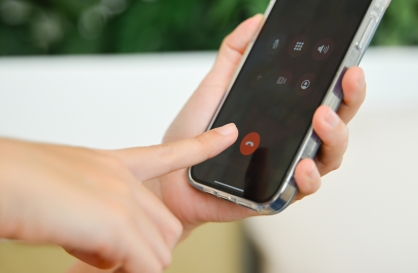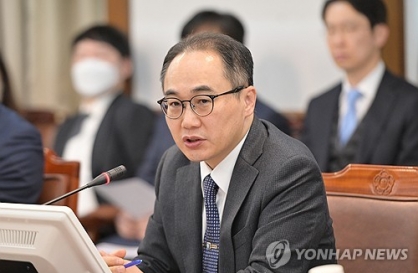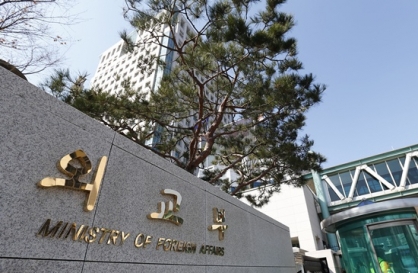‘Comfort women’ statues magnet for Koreans
Artist couple behind 30 statues of teenage girls presents six different versions of the symbolic statue at an exhibit in Seoul
By 황장진Published : March 3, 2016 - 16:04
Sculptors Kim Seo-kyung and Kim Eun-sung have been making statues of teenage girls that symbolize Korean young women forced to work as Japanese military sex slaves, euphemistically called “comfort women,” since 2011. They have made 30 statues so far, with more in the making.
The bronze sculptures are exhibited at memorial parks, museums and on the streets of Korea, the U.S. and Canada.
This month, six variations of the “Statue of a Girl of Peace” are on view at a gallery in Seoul where the artists are holding the first-ever gallery exhibition of the statues they have made over the last five years.
“From the seated statue in front of the Japanese Embassy in Seoul and the standing one on Geoje Island to the one with a butterfly made with students, all six versions of the statues are on view here,” said Kim Seo-kyung, 51. The exhibition is being held at Gallery Godo at Yulgok-ro 24, Jongno-gu, Seoul, until March 15.
The first statue the husband-and-wife team made sits across the Japanese Embassy in Seoul -- a short-haired teenage girl with her fists clenched in her lap and a bird on her shoulder. It was placed there in December 2011 to mark the 1,000th Wednesday demonstration. The protests began in the 1990s demanding a sincere apology and compensation for the surviving victims of military slavery from Japan, and still continue today.
“We saw a small group of old women protesting in front of the Japanese Embassy in January 2011. We were shocked to find out that the ‘comfort women’ issues hadn’t been solved,” said Kim Eun-sung, 52. Kim said he learned about the issue in 1991 when one of the victims, Kim Hak-soon, revealed their ordeals during the war for the first time.
The artists said they felt guilty for not doing anything to help resolve the issue. They visited the office of the Korean Council for the Women Drafted for Military Sexual Slavery by Japan and asked what they could do to help them. The nongovernmental organization was planning to build a memorial stone for the victims who were deceased. The artists agreed to help them make one.
“Even then, there was pressure from the Japanese government, which demanded that the memorial stone not be erected,” said Kim Eun-sung.
“A sense of rage came over us. We took the plan further to make a sculpture.”
The initial image the artists had in mind was of an old woman in her 80s -- the current age of the victims -- scolding Japan with a rod. But then Kim Eun-sung suggested a statue of a teenage girl -- a 15-year-old girl like the victims when they were abducted by Japanese soldiers.
“The aged victims were young girls when they were abducted by Japanese soldiers. I thought it should be the image of a young girl in order to represent their voices,” said Kim Seo-kyung.
The short, roughly cut hair represents that young Korean girls had their hair cut forcibly by Japanese soldiers. The tightly clenched fists symbolize their strong will to fight against the Japanese government for a sincere apology. The bird on the left shoulder is a link between the victims who passed away and those who are still alive. The empty chair next to the statue is a place for the deceased victims.
Variations of the sculpture have been made as the artists collaborated with other NGOs and student groups. Most of them are seated, but one piece made with a high school displays a standing girl with one arm raised to support a butterfly.
“We collaborated with many people, citizens and students and made the different versions to best represent their wishes to help the victims,“ said Kim Seo-kyung.
Money for the sculptures was raised through crowdfunding to cover materials, shipping and others costs.
The artists recently launched a new project, making smaller versions of the existing sculptures with more affordable materials.
“Since Dec. 28, many people have called us, asking us whether we have smaller statues or 3-D-printed models. They were outraged to see the deal between the Korean and Japanese governments made to settle to issue.
The two countries agreed on the “final and irrevocable” settlement that includes Japan’s payment of $8.3 million into a fund for surviving victims reportedly on condition of removing the statue across the Japanese Embassy in Seoul.
The deal, however, was met with disappointment and outrage by the 44 surviving victims and many Koreans.
“After the deal, we started the funding for making small statues, and raised 100 million won ($82,000) in just 46 hours,” said Kim Seo-kyung.
The artists will make smaller teenage girl statues in three different heights, from 10 centimeters to 30 centimeters. At the exhibition, a 50-centimeter tall statue is on display.
“My wish is that the surviving victims receive sincere apology from Japan and that our work contribute to help recover their honor,” said Kim Eun-sung.
On Feb. 24, hundreds of citizens gathered in front of the Japanese Embassy in Seoul, surrounding the seated bronze statue. In subzero temperature, the statue was wrapped in a cape, wearing a knit hat, scarf and socks.
“The statue tells us that the issue of wartime sex slavery is not resolved and asks us not to forget them (victims of wartime sex slavery),” said Park Ji-hyun, a college student from a civic group named Hope Butterfly, in an opening speech of the 1219th weekly Wednesday demonstration.
By Lee Woo-young (wylee@heraldcorp.com)





![[Weekender] Korean psyche untangled: Musok](http://res.heraldm.com/phpwas/restmb_idxmake.php?idx=644&simg=/content/image/2024/05/02/20240502050841_0.jpg&u=)
![[Eye Interview] 'If you live to 100, you might as well be happy,' says 88-year-old bestselling essayist](http://res.heraldm.com/phpwas/restmb_idxmake.php?idx=644&simg=/content/image/2024/05/03/20240503050674_0.jpg&u=)










![[Herald Interview] Director of 'Goodbye Earth' aimed to ask how we would face apocalypse](http://res.heraldm.com/phpwas/restmb_idxmake.php?idx=652&simg=/content/image/2024/05/03/20240503050732_0.jpg&u=)
